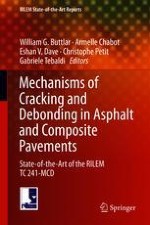Premature cracking in asphalt pavements and overlays continues to shorten pavement lifecycles and creates significant economic and environmental burden. In response, RILEM Technical Committee TC 241-MCD on Mechanisms of Cracking and Debonding in Asphalt and Composite Pavements has conducted a State-of-the-Art Review (STAR), as detailed in this comprehensive book. Cutting-edge research performed by RILEM members and their international partners is presented, along with summaries of open research questions and recommendations for future research.
This book is organized according to the theme areas of TC 241-MCD - i.e., fracture in the asphalt bulk material, interface debonding behaviour, and advanced measurement systems. This STAR is expected to serve as a long term reference for researchers and practitioners, as it contributes to a deeper fundamental understanding of the mechanisms behind cracking and debonding in asphalt concrete and composite pavement systems.
